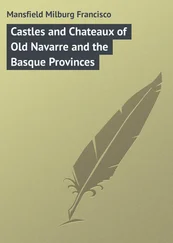Milburg Mansfield - The Cathedrals of Northern France
Здесь есть возможность читать онлайн «Milburg Mansfield - The Cathedrals of Northern France» — ознакомительный отрывок электронной книги совершенно бесплатно, а после прочтения отрывка купить полную версию. В некоторых случаях можно слушать аудио, скачать через торрент в формате fb2 и присутствует краткое содержание. Жанр: foreign_prose, Путешествия и география, на английском языке. Описание произведения, (предисловие) а так же отзывы посетителей доступны на портале библиотеки ЛибКат.
- Название:The Cathedrals of Northern France
- Автор:
- Жанр:
- Год:неизвестен
- ISBN:нет данных
- Рейтинг книги:4 / 5. Голосов: 1
-
Избранное:Добавить в избранное
- Отзывы:
-
Ваша оценка:
- 80
- 1
- 2
- 3
- 4
- 5
The Cathedrals of Northern France: краткое содержание, описание и аннотация
Предлагаем к чтению аннотацию, описание, краткое содержание или предисловие (зависит от того, что написал сам автор книги «The Cathedrals of Northern France»). Если вы не нашли необходимую информацию о книге — напишите в комментариях, мы постараемся отыскать её.
The Cathedrals of Northern France — читать онлайн ознакомительный отрывок
Ниже представлен текст книги, разбитый по страницам. Система сохранения места последней прочитанной страницы, позволяет с удобством читать онлайн бесплатно книгу «The Cathedrals of Northern France», без необходимости каждый раз заново искать на чём Вы остановились. Поставьте закладку, и сможете в любой момент перейти на страницу, на которой закончили чтение.
Интервал:
Закладка:
Not entirely without beauty, in spite of its great proportions, it is more with wonder than admiration that one views both its details and proportions. Though it is perhaps unfair to condemn its style as unworthy of the Augustan age of French architecture, surely the ambition with which the work was undertaken was a laudable one enough, and it is only from the fact that it spells failure in the eyes of many who lack initiative in their own make-up, that it only qualifiedly may be called a great work.
The choir, which now dates from 1322, perforce looks unduly short, by reason of the absence of a nave to add to the effect of horizontal stability; and the great height of the adjoining transept; but the chevet and buttresses are certainly a marvel of grace and towering forms.
The portals of the transept are of the period of Francis I., with flowing lines and ornate decorations – "having passed the severity and ethical standards of maturity, and progressed well along the path to senility," as a vigorous Frenchman has put it. True enough in its application is this livid sentiment, – perhaps, – but its jewel-like south portal, like the " gemmed " west front of Tours, forms an attractive enough presentment to please most observers who do not delve too deeply into cause and effect. The north portal is less ornate, but its beautifully carved doors are by the same hand as that which worked the opposite portal. The ornamental stonework here is unusual, suggesting an arrangement which may or may not have been intended as a representation of the "Tree of Jesse." In any case it is a remarkable work of flowing Gothic "branches," which, though mainly lacking its intended interspersed figures, is not only unique among exterior decorations, but appears as a singularly appropriate treatment of a grand doorway.
Adjoining the choir on the right is a sacristy occupying a small structure, and to the westward is a fragmentary edifice known as the Basse Œuvre , – one of the oldest existing buildings in France; a Romano-Byzantine work, variously stated as of the sixth to eighth century and forming a portion of the original church which occupied the site of the present Cathedral.
The general impressiveness of this great church – the memory which most of us will carry away – is caused by its immensity, its loftiness, and the general effect of lightness. These form an irresistible galaxy of features which can hardly fail to produce a new and startling sensation upon any observer.
As to decorative embellishments, the church is by no means lacking. The coloured glass, typical of the best period of the art, is luxurious and extensive; that contained in the north and south transept rose windows being the exceedingly beautiful work of Le Prince, a celebrated sixteenth-century artist.
Numerous side chapels surround the ambulatory of the choir, and on the west wall of the transept are hung the eight tapestries after the sixteenth-century Raphael cartoons now at South Kensington. These tapestries are, it is to be presumed, late copies, since, of the two early sets woven at Arras, one is preserved in the Vatican and the other at the Museum at Berlin. A modern fresco of Jeanne Hachette, a local Amazon, adorns one of the choir chapels. A modern astronomical clock, with numerous dials, striking figures, and crowing cocks, is placed near the north transept. It might naturally be supposed that in our day the canons of good taste would plead against such a mere "curio" being housed in a noble church.
The former Bishop's Palace, dating from the fourteenth to sixteenth centuries, is now the Palace of Justice. The present episcopal residence is immediately to the north of the Cathedral and is modern.
As a tapestry-making centre Beauvais ranks with the famous Gobelin Manufactory at Paris.
IV
NOTRE DAME DE ROUEN
Rouen, of all the mediæval cities of France, is ever to the fore in the memories of the mere traveller for pleasure. In no sense are its charms of a negative quality, or few in number. Quite the reverse is the case; but the city's apparent attraction is its extreme accessibility, and the glamours that a metropolis of rank throws over itself; for it must not be denied that a countrified environment has not, for all, the appealing interest of a great city. It is to this, then, that Rouen must accredit the throngs of strangers which continually flock to its doors from the Easter time to late autumn. In addition there are its three great churches, so conveniently and accessibly placed that the veriest tyro in travel can but come upon them whichever way he strolls. Other monuments of equal rank there are, too, and altogether, whether it be the mere hurried pecking of a bird of passage, or the more leisurely attack of the studiously inclined, Rouen offers perhaps much greater attractions than are possessed by any other French city of equal rank.
So closely, too, have certain events of English history been interwoven with scenes and incidents which have taken place here, that the wonder is that it is not known even more intimately by that huge number of persons who annually rush across France to Switzerland or Italy.
Chroniclers of the city's history, its churches, and its institutions have not been wanting, in either French or English; and even the guide-books enlarge (not unduly) upon its varied charms. Once possessing thirty-two churches, sixteen yet remain; quite one-half of which may be numbered to-day as of appealing interest. En passant , it may be stated that here at Rouen, in both Notre Dame and the Abbey Church of St. Ouen, is found that gorgeous functionary, commonly called "the Suisse," who seeks your gold or a portion thereof, in return for which he will favour you by opening an iron wicket into the choir, an incumbrance unnoticed elsewhere, except at Paris and St. Denis.
The late Gothic church of St. Ouen, where the Maid of Orleans received her fatal sentence, shows a wonderful unity of design even as to its modern western towers; a consistency not equally the possession of the neighbouring cathedral, or even of most great churches. Altogether, this grand building is regarded as an unparallelled example of the realization of much that is best of Gothic architecture at its greatest height. In its central tower alone – which may or may not be suggestive of a market-basket, accordingly as you will take Ruskin's opinion, or form one of your own – is the least evidence of the developed flamboyant found. Its interior is clean-cut and free of obstruction; the extreme length of its straight lines, both horizontal and perpendicular, entirely freed from chapel or choir screen, embrace and uphold its "walls of glass" in an unequalled manner.
In strong contrast to this expressively graceful style is the ultraflorid type of St. Maclou, the other of that trinity of architectural splendours, which, with the Cathedral of Notre Dame, form the chief ecclesiastical monuments of the city. St. Maclou, which dates from the early fifteenth century, though not of the grand proportions of either of the other great churches, being rather of the type of the large parish church as it is known in England, holds one spellbound by the very daring of its ornaments and tracery, but contains no trace of non-Gothic. The French passion for the curved line is nowhere more manifest than here (and in the west front of Notre Dame), where flowing tracery of window, doorway, portal, and, in general, all exterior ornament, is startling in its audacity. To view these two contrasting types before making acquaintance with the Cathedral of Notre Dame itself, is to prepare oneself for a consideration in some measure of a combination of the charms of both, woven into one fabric. Nowhere, at least in no provincial town of France, are to be found such a categorical display of ecclesiastical architectural details as here.
Читать дальшеИнтервал:
Закладка:
Похожие книги на «The Cathedrals of Northern France»
Представляем Вашему вниманию похожие книги на «The Cathedrals of Northern France» списком для выбора. Мы отобрали схожую по названию и смыслу литературу в надежде предоставить читателям больше вариантов отыскать новые, интересные, ещё непрочитанные произведения.
Обсуждение, отзывы о книге «The Cathedrals of Northern France» и просто собственные мнения читателей. Оставьте ваши комментарии, напишите, что Вы думаете о произведении, его смысле или главных героях. Укажите что конкретно понравилось, а что нет, и почему Вы так считаете.












